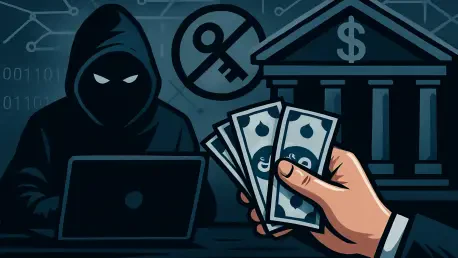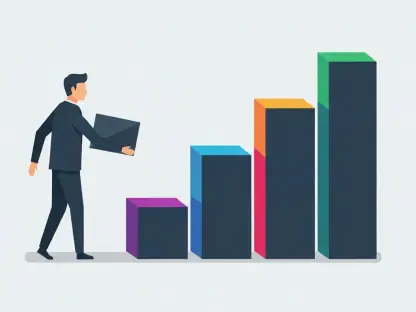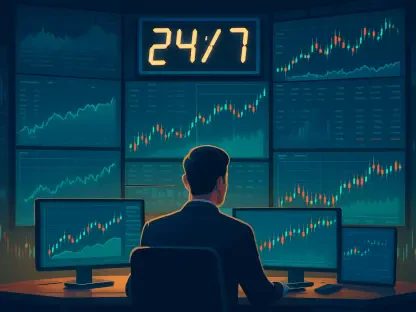I’m thrilled to sit down with Priya Jaiswal, a renowned expert in banking, business, and finance, whose deep knowledge of market analysis, portfolio management, and international business trends offers invaluable insights into the complexities of the financial sector. Today, we’ll delve into critical issues surrounding recent developments at one of the largest U.S. banks, exploring topics like significant financial setbacks, the challenges of fraud in lending, broader credit market concerns, and strategic initiatives aimed at economic security. Priya’s expertise will help us unpack these intricate matters and understand their implications for the industry at large.
Can you walk us through the factors that can lead to a major financial charge-off, such as the $170 million hit related to a subprime auto lender like Tricolor?
Certainly, Dean. A charge-off of this magnitude often stems from a combination of misjudged credit risk and unexpected borrower distress. In cases like Tricolor, where a lender focuses on subprime auto loans, the inherent risk is already high due to the customer base’s lower creditworthiness. If the bank overestimates the collateral value—say, the used cars securing the loans—or underestimates default rates, losses can pile up fast. Add to that potential operational or fraudulent issues on the borrower’s end, and the exposure becomes a significant write-down. It’s a stark reminder of how quickly things can unravel in specialized lending segments when due diligence falls short.
How do banks typically assess risk when lending to niche players in volatile sectors, and what might go wrong in such evaluations?
Banks usually rely on a mix of quantitative models and qualitative judgment to assess risk. They’ll look at historical default rates, the borrower’s business model, and the quality of collateral. For a niche player in a volatile sector like subprime auto lending, they might stress-test scenarios of economic downturns or drops in asset values. What can go wrong is often tied to over-optimism—assuming past performance will hold or that collateral will retain value. Additionally, if there’s insufficient scrutiny of the borrower’s internal practices or if red flags are missed, the bank can be blindsided by sudden insolvency or fraud, which seems to have played a role in some recent high-profile cases.
What steps can a financial institution take to strengthen its processes after a significant lending loss?
After a major loss, banks typically conduct a thorough post-mortem to dissect what went wrong. This involves reviewing underwriting standards, stress-testing existing portfolios, and enhancing due diligence protocols. They might tighten criteria for certain sectors or increase collateral requirements. Technology also plays a big role—using advanced data analytics to detect early warning signs of distress or fraud. Beyond that, there’s often a cultural shift toward greater accountability, ensuring teams are aligned on risk management priorities. It’s about balancing caution with opportunity, so the institution doesn’t become overly risk-averse and miss out on growth.
When executives mention concerns about ‘apparent fraud’ in secured lending, what types of deceptive practices might they be referring to?
In secured lending, fraud can take several forms. One common issue is collateral misrepresentation—where the borrower inflates the value or condition of assets securing the loan, like overvaluing inventory or vehicles. Another is falsified financials, where revenue or cash flow is overstated to secure larger credit lines. There could also be diversion of funds, where loan proceeds meant for specific business purposes are siphoned off elsewhere. These practices erode trust and can lead to substantial losses when the true state of affairs comes to light, especially if the collateral turns out to be worth far less than assumed.
How effective do you think current fraud prevention controls are in large banks, and what areas might still need improvement?
Large banks have robust controls—think multi-layered approval processes, real-time monitoring systems, and regular audits. But no system is foolproof. A determined fraudster can often exploit gaps, especially in complex or high-volume lending areas where oversight might be stretched thin. One area needing improvement is the integration of AI and machine learning to flag anomalies faster. Also, better collaboration with external partners—like regulators or other banks—to share intelligence on emerging fraud schemes could help. It’s a cat-and-mouse game, and banks must constantly evolve to stay ahead.
What does the sentiment ‘when you see one cockroach, there are probably more’ imply about potential systemic issues in a bank’s lending portfolio?
This colorful metaphor suggests that a single incident of loss or fraud might be a symptom of deeper, widespread issues within a portfolio. It’s a call to action for banks to dig deeper, questioning whether the problem is isolated or indicative of broader weaknesses in risk assessment, underwriting, or monitoring. It could point to systemic overexposure to certain sectors or a failure to adapt controls to evolving risks. The implication is that complacency after one incident could be costly—banks need to assume there are hidden problems and act proactively to uncover them.
When executives point to ‘early signs of excess’ in the credit market, what kinds of overextensions or vulnerabilities might they be concerned about?
They’re likely referring to frothy conditions in the credit market—where lending standards loosen, asset prices balloon, and borrowers take on more debt than they can sustainably manage. This can happen in areas like commercial real estate, leveraged loans, or consumer credit during prolonged bull markets. High asset prices can mask underlying risks, making collateral seem more secure than it is. When a downturn hits, these excesses become painful, as defaults rise and asset values plummet. It’s a warning that the good times might be breeding complacency across the sector.
How does the duration of a credit bull market shape the way banks and analysts view potential risks on the horizon?
A long credit bull market often lulls stakeholders into a false sense of security. When defaults are low and asset prices keep climbing, banks may relax underwriting standards or chase yield in riskier segments. Analysts might overlook warning signs, assuming the cycle will continue indefinitely. But the longer the bull market, the greater the potential for a sharp correction—history shows that extended periods of easy credit often precede busts. It shapes a cautious outlook among prudent players, who start building buffers and scrutinizing portfolios for cracks before the inevitable shift.
In terms of lending to nonbank financial institutions, why might some see this as relatively safe compared to other areas, and what’s the counterargument?
Some view lending to nonbank financial institutions—or NBFIs—as safer because these loans are often highly secured, backed by tangible assets or cash flows, and the borrowers are typically diversified across sectors. Banks might also see these entities as sophisticated players with solid risk management. The counterargument is that NBFIs can be opaque—underwriting standards of their own portfolios might be unclear, and during a downturn, their reliance on short-term funding can amplify stress. If a bank has significant exposure, a ripple effect from NBFI distress could hit hard, making it a hidden vulnerability.
Looking at strategic moves, what’s the significance of a bank committing massive investments—say, $1.5 trillion—toward economic security and resilience initiatives?
A commitment of that scale signals a long-term vision to not just profit, but to shape economic stability. It’s about deploying capital into critical areas like supply chain resilience, energy independence, and advanced manufacturing, which can bolster national interests while generating returns. For a bank, it diversifies risk away from traditional lending cycles and positions them as a partner in societal progress. It also reflects a response to geopolitical and economic uncertainties—investing in industries that ensure stability can be a hedge against broader market volatility. It’s a bold move that blends purpose with pragmatism.
What’s your forecast for the credit market over the next few years, given the current landscape of high asset prices and prolonged bull conditions?
I think we’re approaching a turning point in the credit market. The prolonged bull run, coupled with inflated asset prices, suggests we’re due for a correction—perhaps within the next two to three years. Rising interest rates and geopolitical tensions could act as catalysts, squeezing over-leveraged borrowers and exposing weak spots in portfolios. Banks will likely tighten standards as defaults tick up, particularly in high-risk segments like subprime lending or commercial real estate. However, institutions that have built strong buffers and diversified their exposure—like through strategic investments in resilient sectors—will weather the storm better. It’s a time for vigilance, not panic, as the cycle inevitably shifts.









